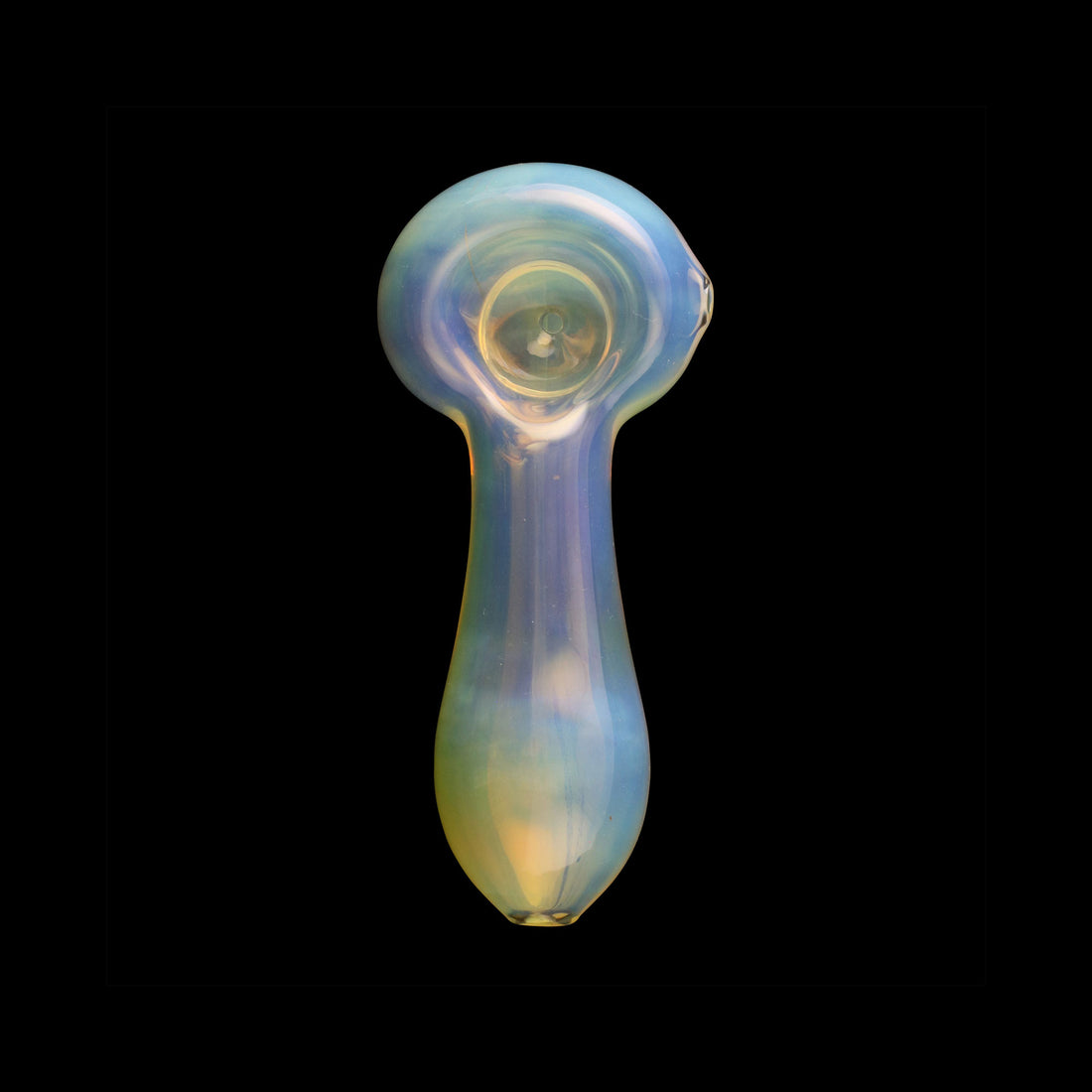
Share
How Do Color Changing Pipes Work?
Who among us does not enjoy shopping for a fancy, new glass pipe? It seems like every day, there are more options to choose from, unique styles and designs, and a general increase in the variety of colors, materials, and shapes that you can find! One of our favorite pipe features is color-changing glass, otherwise known as chameleon glass. What does it mean for glass to be “color-changing,” and what’s the best way to keep your chameleon pipe in working order?
How Do Color Changing Pipes Work?
A common misconception with color-changing pipes is that they change color instantly because of the heat applied to smoke dry herbs. This idea is similar to plastic cups or coffee mugs that immediately change color based on how hot or cold the substance is inside. However, color changing pipes work a bit more slowly!
Instead of instant changes due to temperature fluctuations, color changing glass pipes make use of the resin that slowly builds inside the bowl and the vapor path of the pipe. When the pipes are made, they are fumed with a very thin layer of metal, usually silver or gold, which is almost invisible. However, when resin begins to build on the pipe, light can no longer easily pass through the fumed silver and gold. Instead, light is reflected, giving the illusion that the color is changing. Once the pipe is washed and the resin removed, light can again pass through the fumed metal, making it appear as though the pipe has returned to its original color.
This process will continue for the life of the pipe! Pretty cool, right?

How Do I Clean My Color Changing Pipe?
Fortunately, chameleon glass pipes do not require any special cleaning that is different from a typical glass pipe. First, make sure that the pipe has completely cooled from the last time you used it. Then, remove any loose debris that may be present in the bowl or vapor path. From there, soak the pipe in a cleaning solution for at least 45 minutes. We recommend using Formula 420 Cleaner, which is a specialty cleaner designed specifically for glass pipes. You can also use isopropyl alcohol, but you will need to be extra careful. Isopropyl alcohol presents a significant fire hazard, so be sure you allow your pipe to soak clear from open flames.
Once the pipe has soaked, remove it from the solution bath. Thoroughly rinse it, especially if you used isopropyl alcohol, and allow the pipe to air dry completely. This makes sure that you do not smoke any remaining cleaning agent that has not yet evaporated from the pipe.
If you have stubborn residue that was not removed in the soaking, use a cotton swab to gently rub away any remaining stains.
What Styles of Pipes Have Color Changing Glass?
Most handheld pipes have options for color changing glass. This is especially true with spoon, chillum, sherlock, and Gandalf pipes, though you can find color-changing pipes of any style if you look hard enough! Most are hand-crafted, often within the U.S., so you could even custom order one if you wanted! However, the price of a custom-ordered color-changing pipe will be very high. We recommend taking a look at premade options, including our collection of hand-crafted pipes!

Is a Color Changing Pipe Worth It?
Well, we certainly think so! However, it comes down to what you want out of a pipe! Chameleon glass can increase the price of a pipe, so if you are on a shoe-string budget, you may need to opt for a different pipe. The changing colors are a great addition to the style, but if you do not want your pipe to change, then obviously chameleon glass isn’t for you! Some people find a pipe that they love and do not need the style to be any different, which is great!
Take some time to think about the color scheme you want out of a pipe and to determine whether or not your budget has room for a unique pipe. Regardless of which decision you make, the right choice is always the one that best aligns with what you are looking for!
Products Related To Blog
Blue Chameleon Glass Spoon Pipe
Related Blog Posts
Can You Put Water in a Sherlock Pipe?
What are Glass Spoon Pipes, Chillums and Sherlock Hand Pipes
